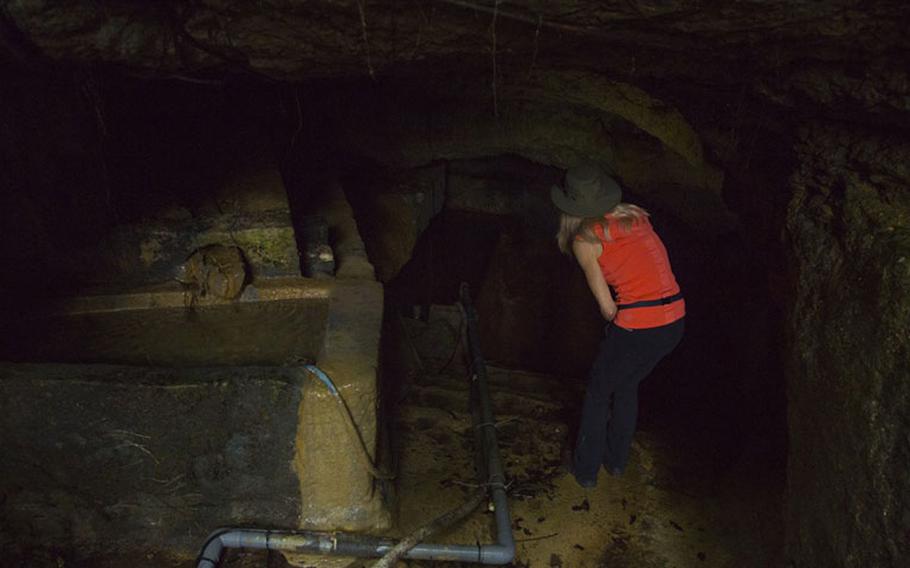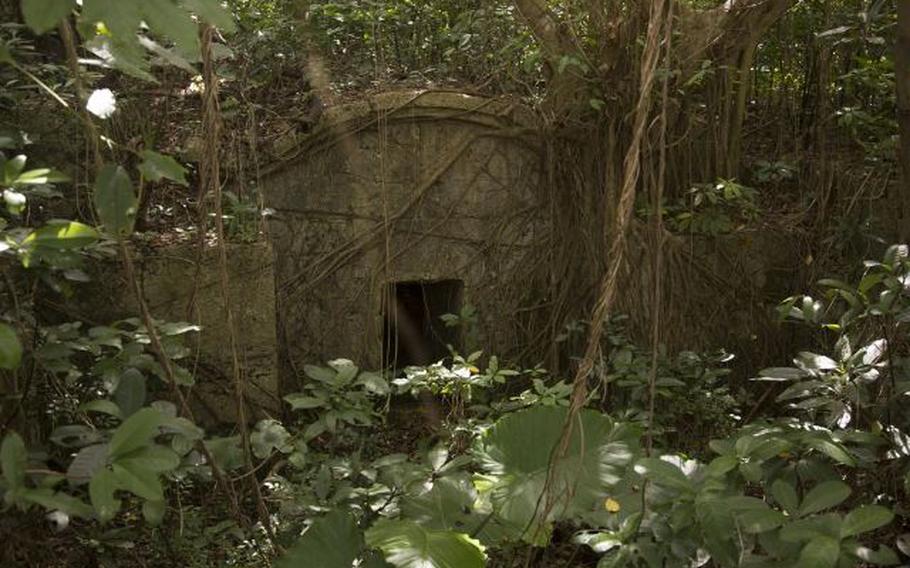Travel
Exploring Okinawa: What not to do at cultural sites
Marine Corps Installations Pacific March 30, 2025

Karen Balabis examines the spring on Marine Corps Air Station Futenma, Okinawa, Japan. The spring was used essential to life in the surrounding villages for water and housed civilians during World War II. The spring is still used by farmers to water their crops. Balabis is an environmental coordinator with Environmental Affairs Branch, Marine Corps Installations Pacific. (Lance Cpl. Kelcey Seymour, U.S. Marine Corps)
CAMP FOSTER, OKINAWA, Japan – Okinawa is rich in cultural sites, from the family tombs scattered throughout the landscape to the springs that sustained whole villages, and the ruins of castles.
These sites are sacred and respected by both the local community and the Japanese government. The sites of Okinawa are not in remote gated areas, they are flecked among the hiking paths in crevices and beside homes in simple stone structures.
“Marines shouldn’t go into caves or crevices because many of the time these places are tombs,” said Nicholas Chamberland, Marine Corps Installations Pacific archeologist. “These places can have remains and we don’t want to disturb or disrespect the families. There are plenty of shrines and historical locations that are open with English translations so visit there, don’t go looking off a beaten path.”

A photo of an open turtle-back tomb on Marine Corps Air Station Futenma, Okinawa, Japan. These tombs are used to hold the remains of families. When they are closed, the tomb is still in use. When open, the family spirits are released. (Lance Cpl. Kelcey Seymour, U.S. Marine Corps)
As guests of the Japanese government on Okinawa, Marines are to uphold the highest standard of conduct along with the laws that govern both the U.S. and Japan. It is against the law to litter, graffiti, or damage any cultural site. If a Marine locates a site that looks disturbed or if they find remains, they are to inform the military police as soon as possible. Marines are not to touch or move anything in or around the site.
“Be aware of where you are,” said Masayuki Yonaha, the cultural resource manager for MCIPAC. “The tombs and sacred sites are maintained to a degree. They look almost lost to nature but they are not. Moss, trees, and vine covering a structure does not mean it is forgotten or abandoned. It is just the way of the local culture.”
The sites on the military installations are just as protected as the sites off base. If a place has a sign that says private or "do not enter", then Marines need to comply. There are places on base that allow for visitors such as a prayer tree on Marine Corps Air Station Futenma, and the Chibugaa Spring on Camp Foster, but Marines need to be respectful if they visit. Okinawa does not hide nor horde their cultural sites, but they do require respect is given when visitors are present.
“Okinawa is filled with many sites that the local community encourages us to visit but we need to be respectful,” said Chamberland. “This is their culture, their history, and their home. Treat all the sites here how you wish someone to treat your own home.”